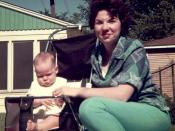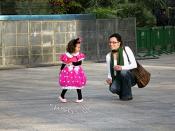Many women today are facing choices that their mothers never had to face. One of these choices is whether or not to go back to work after having a child. This was practically unheard of in the 1950's. In the 1990's it is not whether the mother will or will not go back to work, rather a question of when. When did the choice become set in stone? Why do the mothers of today have to work outside the home versus working in the home, much like their mothers did.
When one thinks of the subject of working mothers, many differing opinions come to mind. What will happen to the child, will the mother have sufficient time to bond with the baby, how will household chores be divided, and so on. When thinking of working women, two models come to mind. One of which is paid employment that has a protective and beneficial mediating effect.
Employment protects women against certain negative aspects of being full-time homemakers and mothers, such as monotonous housework, dependence on the male partner for financial and emotional support, increases self-esteem because they are contributing to the world they live in. These women receive a renewed interest in life because they are in the thick of it. They are living life to the fullest. This model is the one that is constantly referred to as "bad" because it paints the woman as someone who does not really care about the effect of working will have on the baby. In fact, most of these mothers have made this choice with painstaking care. They are constantly feeling what everyone is thinking, and this in turn causes undue stress on these mothers.
The other model of the working mom is the one most people think of when discussing working mothers.


